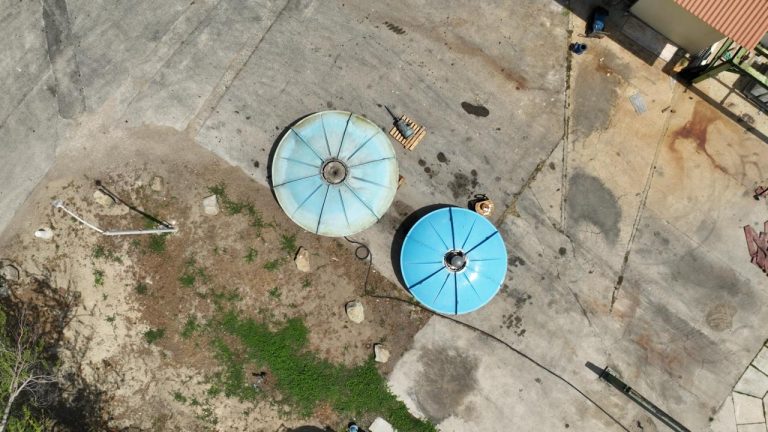6.9% Loan for Aruba, excessive? Aruba’s Interest Rates: A Historical Perspective
This week, the news that caught my eye was the equivalent of half a billion U.S. dollars that Aruba will have to pay the Dutch government back throughout twenty years at 6.9%. This interest could have been close to 50% less, i.e., closer to 3%, had the Aruba government complied with the agreements it had closed with the Dutch government. Before we dive into the intricacies of Aruba’s financial challenges, let’s establish some context. Like many small island nations, Aruba relies heavily on tourism for its economic prosperity. The COVID-19 pandemic brought international travel to a standstill and severely affected the island’s economy. With a decline in tourism revenue, Aruba faced the daunting task of finding alternative sources of income to support its population. The one significant source of relief for Aruba came from the Netherlands. Dutch taxpayers have provided financial support to Aruba, helping it weather the economic storm. Aruba accrued a debt of Afl. 916 million, equivalent to close to US$ 525 million. However, this assistance has not come without its complexities, implications, and politics.
A Historical Perspective
To truly understand the significance of the 6.9% interest rate recently imposed by the Dutch, we need to take a step back and examine Aruba’s borrowing history. Over the years, Aruba has secured loans with interest rates ranging from 5.5% to as high as 9.5%. This historical context is essential in shaping our perspective on the current situation. To get the perspective, I looked into two sources:
- The laws/decrees passed each time. The Government gets authorization to borrow money and
- data from the Central Bank’s Quarterly bulletins
These seem far more reliable than the rhetoric provided by the Government and the supporters/fanatics of the Government. The bulletin contains a neat table showing government security markets: government bonds and debt securities. From 2000 to 2022. The laws/decrees from 2023 provide me with the latest intel.
Looking at this data, one can see a stark depiction of Aruba’s borrowing history, and upon closer examination, it raises several critical questions about the island’s approach to debt and the interest rates it has agreed to over time. One striking aspect is the consistently high-interest rates, exceeding 5% and 6% over the years. While the need to secure financing is understandable, the repeated acceptance of such high-interest rates should raise concerns. These rates substantially increase the cost of borrowing for Aruba and burden the island with significant debt service obligations.
Another concern is the apparent lack of diversification in borrowing strategies. Aruba has relied heavily on government bonds and debt securities. One can question how much more appetite the local market will have for Aruba Floin-denominated government paper. This one-dimensional approach to debt management – and, of course, the crazy spending – may limit the island’s ability to negotiate lower interest rates or explore more cost-effective means of financing. The data raises valid concerns about Aruba’s borrowing patterns and the high-interest rates it has accepted over time. The Government of Aruba must evaluate its debt management strategies and explore alternatives to more favorable terms, ultimately ensuring the island’s more secure and sustainable financial future. Slashing the latest 6.9% interest rate to 50% would be a good first step that would go hand in hand with the Kingdom Ordinance on Financial Supervision (“Raft”) and reforming public spending.
More Recent Interest Rates
Recently, Aruba has borrowed at interest rates like 5.5%, 6%, and even 6.5%. While not negligible, these rates have been considered acceptable and manageable by the Government of Aruba. What’s crucial to note is that these rates were not arbitrarily chosen; they were the product of careful negotiations and assessments of Aruba’s financial standing. Each time these loans were closed, the Government, the minister of Finance, and the government’s cheerleaders in parliament rejoiced in happiness and complimented each other for the job well done.
The 6.9% Interest Rate: Putting it in Context
Against the backdrop of Aruba’s borrowing history, the recent 6.9% interest rate imposed by the Dutch may not appear as excessive as it initially seems or as the spreaders of propaganda would like us to believe. The 6.9% falls within the range of historical rates that the Government of Aruba happily signed off on. Considering the economic challenges posed by the COVID-19 pandemic and the uncertainty of international financial markets, the 6.9% interest rate might be a pragmatic choice. It reflects the lender’s risk assessment, and given Aruba’s credit history, it may be a reasonable compromise. It is essential to consider not only the interest rate itself but also the broader financial context when evaluating the decisions made by Aruba’s policymakers.
When we look at the broader context of government, we must consider, among others, the following:
- When the prime minister of Aruba accepted the emergency funding, it came with strings attached.
- She and the government accepted those strings. Commitments were made, and Aruba had not only incurred financial obligations but also contractual obligations.
- Contractual obligations need to be complied with. Contracts 101.
- In our geopolitical world, when heads of state agree, one must comply. Comply or suffer the consequences. In this case, an interest rate of 6.9% instead of 3.2%.
Why?
Choosing to pay a 3%-plus premium on the foreign aid debt to Holland is a political choice. The private sector and NGOs have condoned the government for accepting this extra financial and undesirable burden. The alternative is to comply with the terms agreed with the Netherlands. Terms that we had a choice to reject, walk away, and say no to, but we didn’t. We said yes, but now we want to backtrack. The lower interest is not the obstacle; the obstacle then must be one or more of the terms the prime minister agreed to without first informing parliament and agreeing without fully disclosing to “we the people” what she agreed to.
The question that arises is which term, which clause is the one that means so much to the Government that the prime ministers and the other ministers find so abrasive that they are willing to deny“we the people” a preferential interest rate. The savings could have benefitted education, mental health care, health care, elderly care, resolving sewage problems in the hotel sector, after-school programs, and more. Yet our government, supported by their puppet senators, thinks otherwise and deliberately shifts the blame to the Dutch Government, the same one that gave Aruba the emergency aid in the first place. Our sister island of Sint Maarten chose wisely, their foreign aid debt is a mere 3.4%. An interest rate that Aruba hasn’t seen for the last 14 plus years….
#YourFavoriteLawyer #YourFavoriteColumnist
















